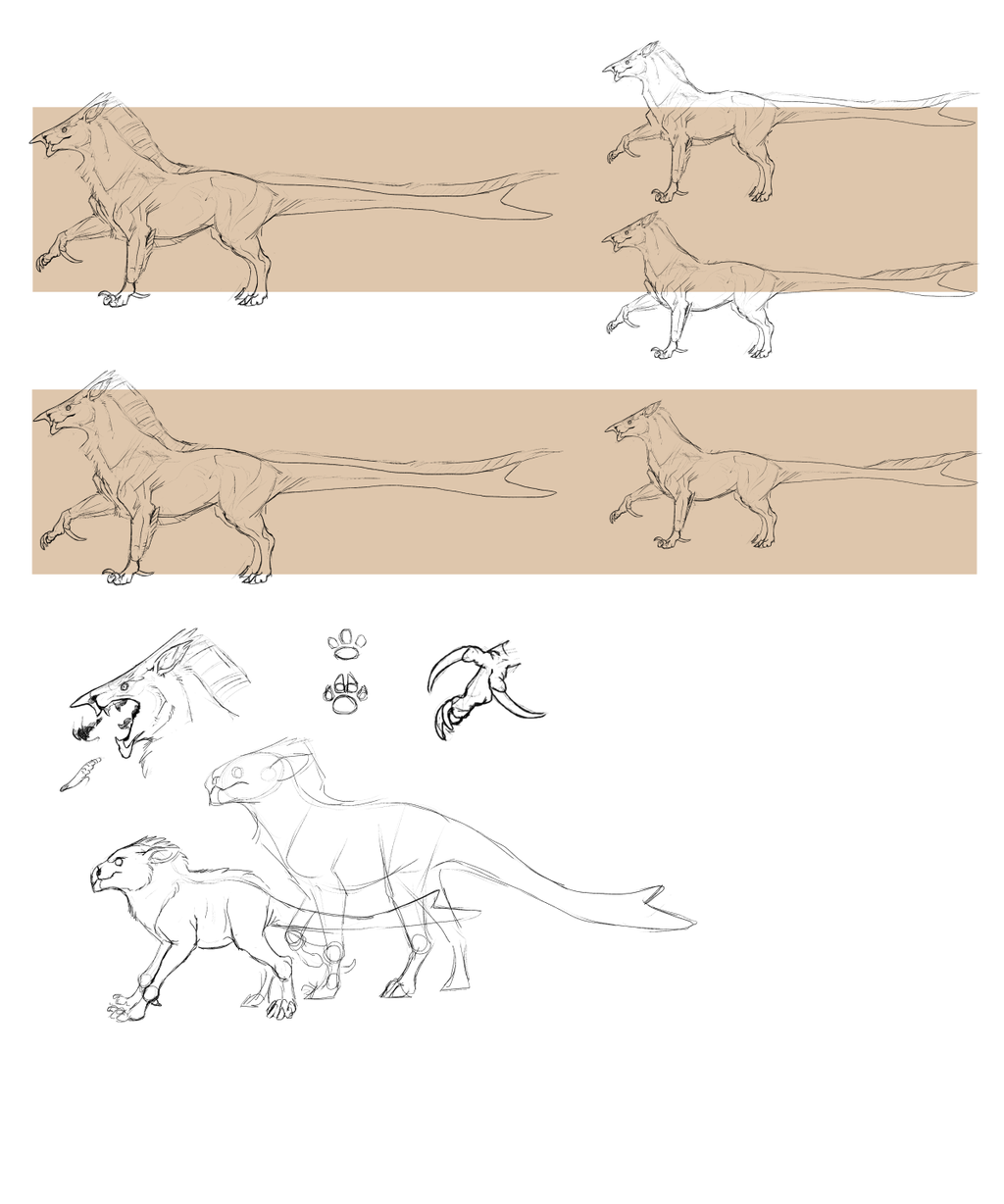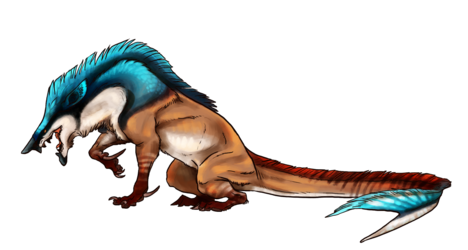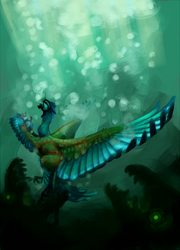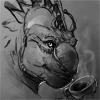Sign In
CloseWHY DO I NEVER MANAGE TO FINISH THESE STUPID THINGS but yes here have a wip of the Ludrache's species sheet and this is just THE BASICS.
I haven't even gotten onto coat colour patterns or mutations or regional differences.
Ludraches are large, cursorial omnivores native to a planet that is a cross between Endor and Naboo; with rolling plains interspersed with vast groves of massive trees that also sometimes overlap with watery terrain. About the size of moose, they are highly intelligent and have been known to mimic speech in an effort to communicate with off-worlders. Some more in-depth research, papers forthcoming, have shown that when given the opportunity they will actively learn to talk and converse with off-worlders.
From the attempts made to communicate, there appear to be distinct cultures throughout their range and at least five different dialects. They all share a similar origin belief that has yet to be translated completely.
The basics are; the top line of three are the female types of which there are three; A, B and C. Type A females are big, powerful dominant beasts with vibrant pelts. They are typically the matriarchs of the mob and will defend it as well as hunt and lead them around to resources/away from danger. Type B females are similar in size to A-types but they are rangier and slightly more muted in colouration; they often leave their maternal mob to join another in order to help spready diversity. They can stand as "lieutenants" to the A matriarchs or even become a matriarch themself if they live long enough. Type C females are the smallest of the the female types but no less imposing. They are the most subdued in colour of the females and are often softer and rounder; They do not usually breed; only in dire circumstances when their mob has been diminished by disease or disaster. Their role is the nanny and wetnurse of the mob; whilst the other mothers are out hunting they will nurse the unweaned and help the weaned youngsters forage; protecting them from danger as they do so. Whilst they will fight if pushed type C females will most common herd their creches away from danger rather than stand and fight and risk the babies.
There are two male types. The female A type-ish Residents and the rangier, type C female like Transient males. The former defend strict territories that female mobs pass through whilst the latter pretend to be type C females in order to sneak in and get it on under the nose of the big guys. Type A females however will often chase off Transient males but not always; some favour the sneaky cleverness over the flashy brawn of the Resident males.
So far it isn't known if one type can transition into another via hormonal or other triggers; B-type females have been seen with colourations approaching and matching those of A-types as well as C-types.
Breeding occurs seasonally with the young being born during seasons most bountiful in food and mild in conditions. Sometimes this requires the migration of the female mobs.
Gestation is approximately 9 months with the young not weaning until roughly seven months of age; it's not known when sexual maturity occurs but it's believed to be between 14-15 years for males and 16 years for females of all types.
Young are born with mottled or dappled coats and a pale mane to better hide. Whilst they are similar to horse foals in terms of precociality they can still take several hours to walk. In the meantime they are guarded by the mob and their mother.
Common foods for Ludraches range from eggs, fungi, tubers and berries and browse to carrion, fish, small game, insect grubs and larger prey items. If they can get their mouth around it and it's worth the effort they will eat it; their dietary habits can be compared to Ursus arctos ssp or the North American Grizzly Bear only with a larger range.
Submission Information
- Views:
- 631
- Comments:
- 2
- Favorites:
- 7
- Rating:
- General
- Category:
- Visual / Digital







Link
LeccathuFurvicael
There sure is a lot of beautiful detail here, and it's hard for me to comment on it all, but I have to say this - their tongue tips remind me of Rainbow Lorikeets or other parrots! Very cool ^w^
Also, neat application of the 'sneaker male' sexual selection quirk, along with the behavioral and physiological intrasex variation! Can't wait to see more. <3